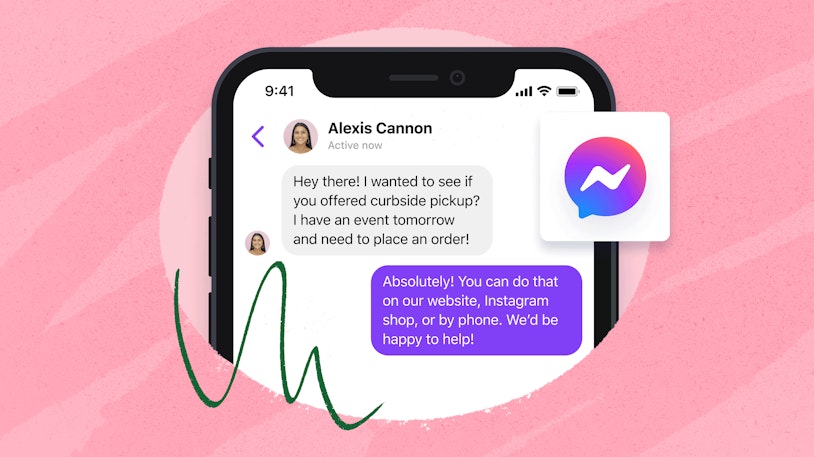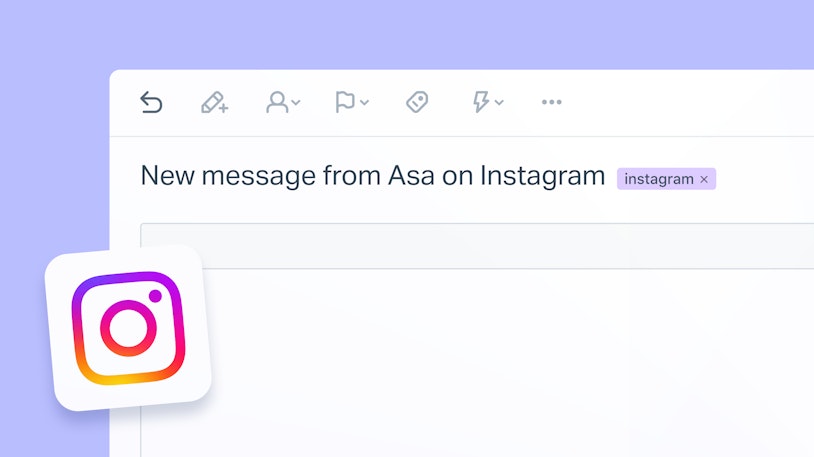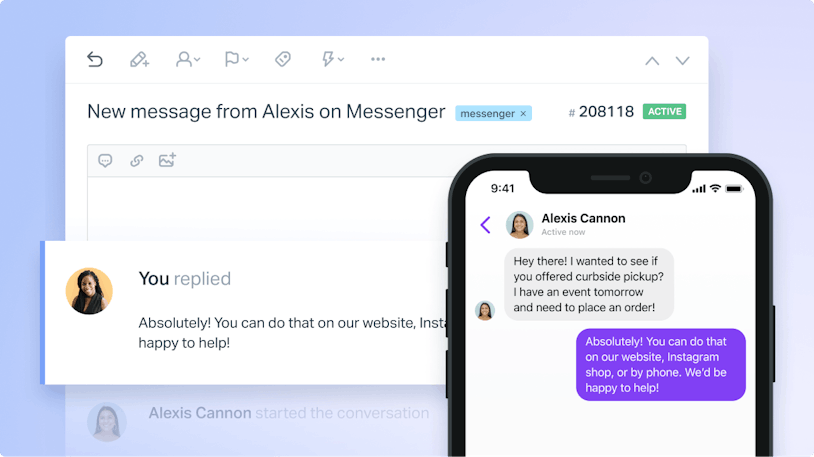The best retail customer service folks somehow sense when they are needed, popping into existence with exactly the right information or item, and then disappearing again.
On either side of that service sweet spot, the customer experience is much worse. Either you can’t find anyone to help at all, or you have someone following you everywhere, getting under your feet like an overgrown toddler.
The same spectrum of service applies online, from the sites that bury their contact details in The Forest of Small Print to websites which vomit “We’d love to chat!” pop-ups all over the information you’re trying to read.
The best online customer service is readily available when needed and otherwise kept out of the way. On your own website, tools like Help Scout’s Beacon can be presented in different ways to different people, adapting to their needs and current contexts.
But what about customers who aren’t on your website when they run into trouble? Perhaps someone who opened a gift and discovered their partner apparently thinks they have giant monster feet, and who now wants to return and replace the shoes (or their partner).
Making your support options accessible in the places your customers already are can reduce the effort expended in getting help. For many brands, Instagram and Facebook are already driving sales, so it makes sense to offer after-sales care in the same place. It’s easy to turn on a new channel, but can your business deliver high-quality service through that channel at sufficient scale? What tools and processes will you need in order to deliver it?
How to deliver high-quality customer service via messaging
You already have an effective customer service organization, delivering consistently high-quality service. If you don’t, start with our Foundations of Great Service course.
It is clear that the channels your customers choose to communicate with you on (and that you choose to make available to them) shape your interactions with them. A phone conversation in real time is different from an email thread spread over hours or days. Different tones, different expectations, and different capabilities.
Messaging as a support channel lives in between the long form text of emails and the in-the-moment back and forth of live chat and phone calls. That means customer support via messaging tools like Facebook Messenger and Instagram DMs need to be handled differently.
Understand the difference between messaging and email support
Every customer will have their own style and preferences, but the channel itself also shapes the communication
More mobile means less time and attention
People using messaging channels are more likely to be on a mobile phone or other small device, more prone to multitasking, and less likely to have immediate access to all the information you might need from them.
Messaging tends toward briefer, abbreviated writing
Writing on a tiny keyboard is hard work. Customers will tend to use more abbreviated language and send shorter messages overall. They will also expect shorter replies that can be more easily read in that limited space.
Smaller screens constrain support options
Where an email can easily hold a large screenshot or file attachment, a messaging customer may not have the capability to send or receive attachments and files. Even those who can receive them may prefer plain text on a mobile device or other small screen.
Customers expect a conversational exchange
Like phone calls and live chats, messaging conversations are typically made up of shorter, back-and-forth segments. Rather than listing out five questions at once, people will often start with one and prefer to deal with one at a time. However, some message-based support can be more like email — a customer might send a series of messages now and wait for a response later. Be prepared to adapt to the way each customer prefers to work.
Customers expect faster responses
Facebook will show visitors your average response time via Messenger, which helps to set accurate expectations. However, you are competing with their past experiences on messaging channels, which typically have shorter response times than email support channels. Many customers will choose Messenger over email if they are in a rush.
Adapting customer service for messaging channels
Even if your team already has all the skills and knowledge required to answer your customers on any channel, there are ways to shape your approach to make messaging support more effective.
Integrate messaging communications into your existing customer data
As much as possible, bring all your communications with a customer into one place so that you always have the fullest context. That helps you make more informed decisions and prevents your asking customers to repeat themselves. A direct integration to your help desk, like Help Scout’s Messenger and Instagram DM channels, will make this easy.
Identify messaging conversations (as opposed to emails and live chats) so they can be handled appropriately
Customer expectations and capabilities are very different on messaging channels, and that means you will need to respond accordingly. Ensure that your team can identify messaging conversations clearly. Consider using tagging, workflows, or folders to make them easier to find and handle.
Added bonus: Help Scout’s social media integrations automatically tag them for you. Your own help desk tool may offer something similar.
Understand the customer’s constraints
Use the “how messaging differs” section above to prepare your team to communicate effectively with messaging customers. Training materials aimed at live chat will be helpful here, too.
Staff your messaging channels more like chat and less like email
The combined expectation of back-and-forth conversation with faster response times will mean you need more team members available to handle messaging support than you would need for the same number of email conversations.
If you are adding a new messaging channel to your support mix, our help desk staffing calculator might be useful in your planning process.
Be less formal and more conversational
Depending on your current voice and tone and your customer base, you may need to adjust your approach when adding messaging support. Rather than replying with long blocks of writing, break it up into smaller chunks and check in with your customer along the way in case they have questions or are confused.
A messaging conversation also tends to be more casual in tone than an email conversation would be, though, as always, you will know your customers best. Read Don’t Let Tone Ruin Your Support Interactions and Taking the Right Tone With Customers for some practical tips on setting the tone.
Know when to switch to another channel
Sometimes support conversations become too complex, time-bound, or emotionally fraught to be successfully handled in the limited scope of a messaging tool. In those cases, gracefully moving to another channel such as a phone or video call might be the best path forward.
Give your team some guidelines for when to consider a channel switch, and read Migrating a Customer Query Between Support Channels for more help.
Adaptive service creates better customer experiences on every channel
Customer-centric companies can not afford to be inflexible in their service delivery. Even the most well-intentioned “customer service best practices” may fail when applied to a new channel.
Instead, work with your team to develop a shared understanding of the feeling and the values you want your customers to experience. Then your staff can adjust their approach to suit any given scenario, using methods that are adapted to the particular channel and customer of the moment.










